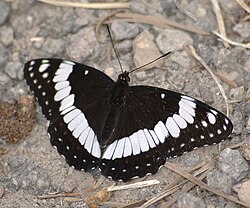| Limenitis weidemeyerii | |
|---|---|
 | |
| Scientific classification | |
| Kingdom: | Animalia |
| Phylum: | Arthropoda |
| Class: | Insecta |
| Order: | Lepidoptera |
| Family: | Nymphalidae |
| Genus: | Limenitis |
| Species: | L. weidemeyerii |
| Binomial name | |
| Limenitis weidemeyerii (W. H. Edwards, 1861) | |
| Synonyms | |
| |
Limenitis weidemeyerii, or Weidemeyer's admiral, is a butterfly from the subfamily Nymphalinae, found in western North America.

